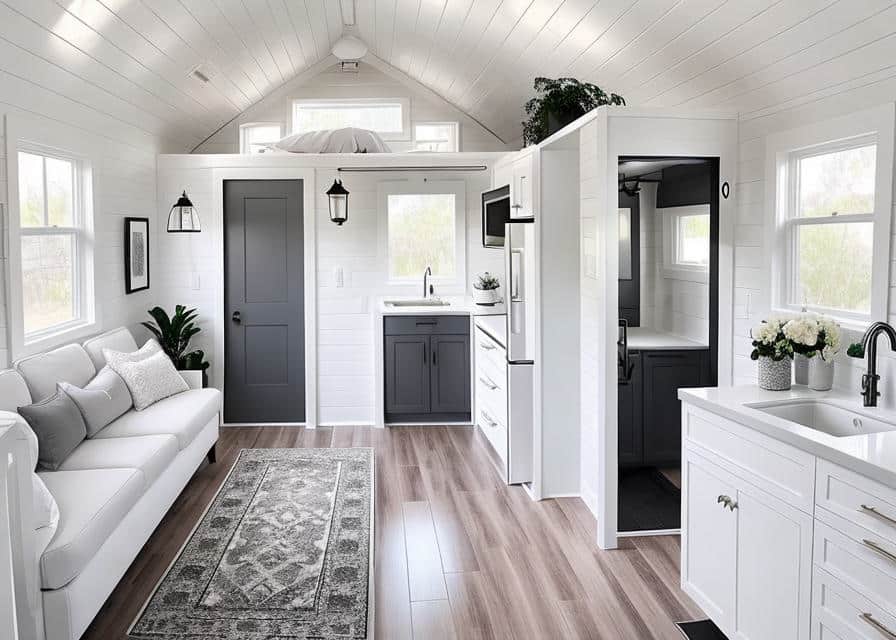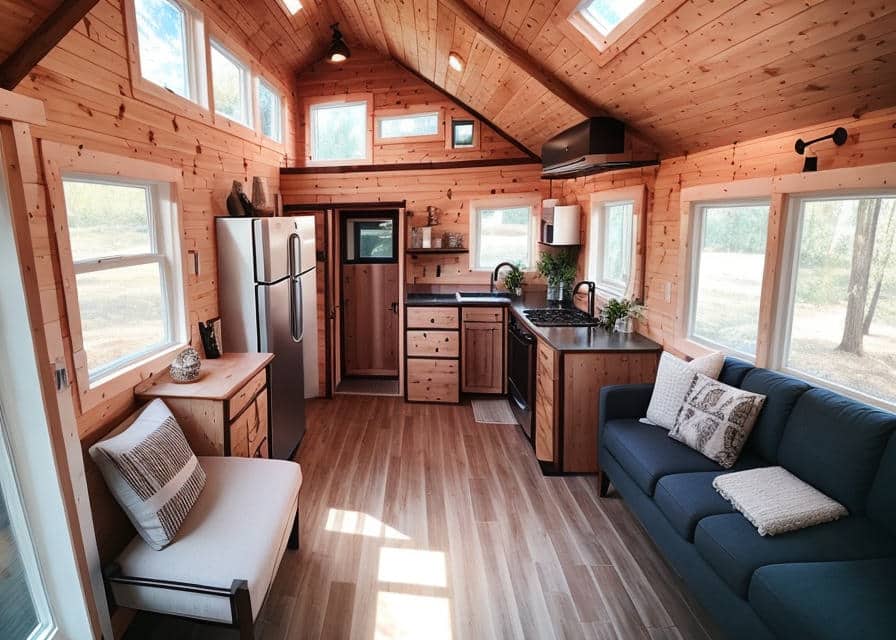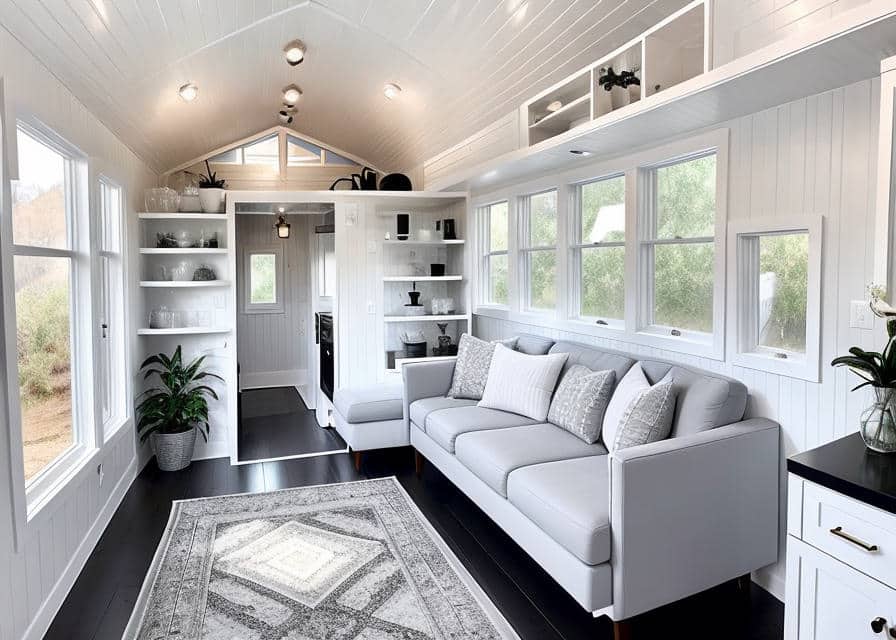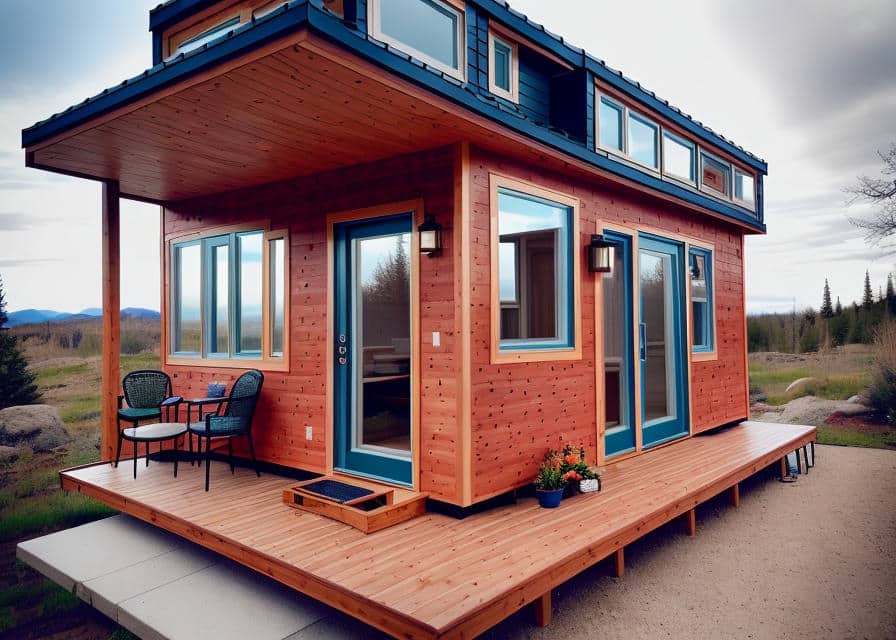Table of Contents
- Introduction
- Section 1: Financial Advantages
- Tiny homes are affordable and cost-effective
- They help reduce debt and promote financial freedom
- Lower utility bills and maintenance costs
- Tax benefits
- Comparison of the costs of a traditional home versus a tiny home
Introduction
Tiny homes, also known as micro-houses or mini-homes, are compact and minimalist living spaces that have been gaining popularity in recent years. These homes are typically less than 400 square feet and provide a simple, cost-effective, and environmentally friendly lifestyle. Tiny homes are not just a trend; they represent a growing movement towards sustainable living and a rejection of the consumerist culture. Despite their small size, these homes offer incredible advantages that traditional homes can’t match. In this article, we will discuss the incredible benefits of tiny homes and why you should consider living in one.

Section 1: Financial Advantages
Tiny homes have a lot of financial advantages, making them an excellent option for those who are looking to save money, live debt-free, and have more financial freedom.
Tiny homes are affordable and cost-effective
One of the most significant advantages of tiny homes is that they are much more affordable than traditional homes. The average cost of a traditional home in the United States is around $280,000, while the average cost of a tiny home is around $23,000 to $70,000. By building or buying a tiny home, you can save a lot of money upfront and avoid a massive mortgage payment.
They help reduce debt and promote financial freedom
Since tiny homes are much cheaper than traditional homes, they can help you avoid taking on large amounts of debt. Many people who live in tiny homes own their homes outright or have minimal mortgage payments, freeing up money for other things like travel, hobbies, and retirement savings. Living in a tiny home can also help you live within your means, reduce your expenses, and achieve financial freedom.
Lower utility bills and maintenance costs
Another significant financial advantage of tiny homes is their lower utility bills and maintenance costs. With a smaller living space, you’ll use less electricity, water, and other utilities, which will result in lower monthly bills. Additionally, since tiny homes have fewer appliances and systems, they require less maintenance, which can save you money in the long run.

Tax benefits
Depending on where you live, there may be tax benefits to owning a tiny home. For example, in some states, tiny homes on wheels are classified as RVs, which means they are exempt from property taxes. Additionally, if you own your tiny home outright, you won’t have to pay a mortgage interest tax deduction, but you may be able to deduct the cost of your home as a second home or rental property.
Comparison of the costs of a traditional home versus a tiny home
To put things in perspective, consider this: the average mortgage payment for a traditional home is around $1,000 per month. In contrast, the total cost of owning and living in a tiny home can be as little as $500 per month, including utilities, maintenance, and other expenses. Over time, the financial savings of living in a tiny home can add up and help you achieve your financial goals.
In conclusion, the financial advantages of tiny homes are clear. By choosing to live in a tiny home, you can save money, reduce debt, and achieve financial freedom. If you’re looking to simplify your life, live more affordably, and have more financial flexibility, a tiny home may be the perfect solution for you.
Section 2: Environmental Advantages
Tiny homes are not just cost-effective; they are also environmentally friendly. Living in a tiny home can help you reduce your carbon footprint, promote sustainable living, and connect you to nature.
Tiny homes are environmentally friendly
One of the main advantages of tiny homes is that they have a much smaller environmental impact than traditional homes. A smaller living space means you use fewer resources, produce less waste, and consume less energy. Since tiny homes are often built with environmentally friendly materials and use sustainable building practices, they are a more eco-friendly housing option.
Reduce carbon footprint
Living in a tiny home can significantly reduce your carbon footprint. By using fewer resources, producing less waste, and consuming less energy, you can make a significant impact on the environment. Additionally, because many tiny homes are designed with sustainable features like solar panels, rainwater harvesting, and composting toilets, they further reduce their environmental impact.
Minimalism and conscious living
Living in a tiny home requires you to live a more minimalist and conscious lifestyle. With less space, you must be more intentional about what you own and what you bring into your home. This focus on intentional living can help you reduce your overall consumption and live a more sustainable lifestyle.

Connection to nature
Many tiny homes are designed to connect you to nature. With large windows, open floor plans, and outdoor living spaces, you can enjoy the natural beauty of your surroundings. Additionally, since tiny homes are often built in more remote locations, you may be more likely to spend time outside, connect with nature, and develop a deeper appreciation for the environment.
Comparison of the environmental impact of traditional homes versus tiny homes
Consider this: The average traditional home in the United States produces around 28,000 pounds of CO2 emissions per year, while a tiny home produces only 2,000 pounds of CO2 emissions per year. Additionally, since tiny homes use fewer resources and consume less energy, they produce less waste and have a smaller environmental impact overall.
In conclusion, living in a tiny home can have a significant environmental impact. By choosing to live in a tiny home, you can reduce your carbon footprint, promote sustainable living, and develop a deeper connection to nature. If you’re passionate about the environment and want to live a more eco-friendly lifestyle, a tiny home may be the perfect solution for you.
FAQs
How are tiny homes environmentally friendly?
Tiny homes are environmentally friendly in several ways. First, they have a smaller carbon footprint compared to traditional homes because they use fewer resources, produce less waste, and consume less energy. Secondly, many tiny homes are designed to incorporate sustainable features like solar panels, rainwater harvesting, and composting toilets. Finally, living in a tiny home requires you to adopt a more minimalist and conscious lifestyle, which can lead to a reduction in overall consumption and a more sustainable lifestyle.
Can tiny homes be built with sustainable materials?
Yes, many tiny homes are built with sustainable materials. Builders often use materials like reclaimed wood, recycled steel, and sustainable insulation. Additionally, some tiny homes are designed to be as eco-friendly as possible by incorporating green features like solar panels, green roofs, and energy-efficient appliances. With the right design and construction, it’s possible to build a tiny home that is both affordable and sustainable.
Section 3: Lifestyle Advantages
Tiny homes offer more than just financial and environmental advantages; they also provide unique lifestyle benefits. In this section, we will discuss the lifestyle advantages of tiny homes and why they may be the perfect choice for those looking for a more intentional and fulfilling way of life.
Flexibility and mobility
One of the biggest lifestyle advantages of tiny homes is their flexibility and mobility. Because tiny homes are compact and lightweight, they can be easily transported from one location to another. This mobility allows you to explore new places, live closer to nature, and experience the freedom of the open road. Additionally, tiny homes offer more flexibility in terms of location, as they can be placed in backyards, on farms, and in other unique and unconventional settings.
Customization and personalization
Tiny homes offer a unique opportunity for customization and personalization. With a smaller living space, you can focus on the details and make your home truly your own. Tiny homes often have unique design features like built-in furniture, hidden storage, and creative use of space. Additionally, since tiny homes are often built to order, you can work with a builder to create a custom design that suits your specific needs and preferences.
Reduction of clutter and minimalism
Living in a tiny home requires you to adopt a more minimalist and intentional lifestyle. With less space, you must be more mindful about what you own and what you bring into your home. This focus on intentional living can help you reduce your overall consumption and live a more clutter-free and simplified lifestyle. By living with less, you can focus on the things that matter most and eliminate the distractions that can weigh you down.

Quality of life and mental health benefits
Living in a tiny home can have a significant positive impact on your quality of life and mental health. With less space and fewer distractions, you can focus on the things that matter most, like spending time with loved ones, pursuing hobbies and passions, and enjoying the natural world around you. Additionally, living in a tiny home can reduce stress and anxiety, as you have fewer financial and household responsibilities and can live a more simplified and intentional lifestyle.
Comparison of the lifestyle of a traditional home versus a tiny home
Living in a traditional home often means living in a suburban or urban neighborhood, with a long commute to work and limited access to nature. In contrast, living in a tiny home often means living closer to nature, with more flexibility in terms of location and mobility. Additionally, living in a tiny home requires you to adopt a more minimalist and intentional lifestyle, which can lead to a more fulfilling and satisfying way of life.
In conclusion, tiny homes offer a unique lifestyle that combines flexibility, customization, minimalism, and intentional living. By living in a tiny home, you can experience a more fulfilling, intentional, and satisfying way of life. Whether you’re looking to downsize, simplify, or live a more mobile and adventurous lifestyle, a tiny home may be the perfect choice for you.
Conclusion
In summary, tiny homes offer a wide range of advantages, including financial savings, environmental sustainability, and a unique and intentional lifestyle. By choosing to live in a tiny home, you can reduce your environmental impact, achieve financial freedom, and experience a simpler, more fulfilling way of life.
Whether you’re looking to downsize, simplify your life, or live a more mobile and adventurous lifestyle, a tiny home may be the perfect choice for you. Join the growing movement of people who are embracing tiny homes and experience the incredible advantages for yourself. With a focus on sustainability, affordability, and intentional living, tiny homes represent a unique and innovative solution to the challenges of modern living. Start your journey tow

